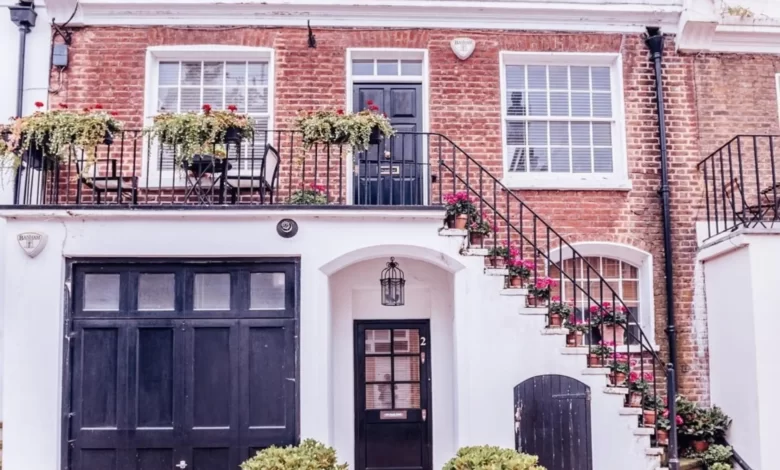
Buying A House: Things Often Missed By Housing Surveyors
Buying any type of property is an expensive and time-consuming endeavour. Therefore, you will want to make sure that you do not have to put any more time or money into a new property after you are finally handed the keys. This is especially true if it’s a new home that you are buying.
Whenever you buy a new house, the previous owner or your mortgage lender will hire a surveyor to review the property. These industry professionals are there to spot any issues in the property that may cause you trouble down the line. They will then suggest that the seller fixes these problems before the sale is finalised. However, everyone is capable of making a mistake every now and then – even property surveyors. As such, there are a few common issues that are missed by housing surveyors or are just not worth mentioning.
Uneven Floors
Almost everyone has heard the rumour that a surveyor’s job is to arrive at a property, stand outside for a bit, and then deem the house fit for sale. If this were true, it would explain why uneven floors are such a big problem for home buyers.
Uneven floors are most common in older properties, and they are normally caused by unnoticed water damage or a build-up of moisture under the property. If the problem is only small, then your uneven floors can be fixed with a floor patch. However, a house with uneven floors throughout will need to be aired out and replaced. This is a very expensive and disruptive process, so you definitely want your surveyors to pick up on it. Although, a problem this big will be noticeable when you initially view the property.
Plastering Defects
Building plaster is a natural barrier between your interior walls and the outside walls. A building surveyor will identify any cracks, holes, or pops as a plastering defect and recommend that these issues are fixed before the sale goes through.
A small plastering defect might not look like much, but these fractures can compromise the integrity of the entire wall. This means that it is easier for dampness to get into your property. You can notice little defects yourself by running your hand over the walls or by checking for flaky paint in a dry room. As you can imagine, just one of these defects could result in you replastering and painting the entire wall.
Subsidence
Small cracks in the wall may not only be a result of a plastering defect. If these cracks run through to the brickwork, then it may be an early sign of subsidence. Subsidence is what experts call the gradual sinking of a house and it is usually caused by the earth under the foundations decaying, or tree roots growing under the house. Other signs of subsidence include diagonal wall cracks, cracks over three millimetres thick, or cracks around doors or windows.
Any damage like this may force you to buy new doors from Online Door Store; however, something more long-term must be done if subsidence is an issue. A seller trying to offload a house with subsidence will not be able to sell. That is why it is important that a surveyor picks up on these issues during their review of the property. The only way to fix a subsidence issue is to have the house underpinned to prevent any further damage. Therefore, you may spot cracks in a house that has had previous subsidence issues. Fortunately, you can tell if a house has been pinned by the large bolts fixed to the outside.
Rot
As things age, they start to decompose. But everything decomposes differently. When it comes to wood and timber, they are subjected to something called rot. This is a nasty process that slowly weakens the wood over time, making it less resilient and prone to crumbling. Not good news when most British homes are held up with wooden joists and timber frames.
Fortunately, it takes a long time for rot to set in any home and it is easy to spot. Most people visiting a property will notice that the house is subject to rot from signs of an overpowering smell of dampness. Even if the homeowner is resourceful enough to cover these odours, a property surveyor can check for rot by inspecting cracked timber. Also, there is likely to be a fungus growth localised entirely around the affected area.
Insulation
Insulation is the foam lining inside your walls to make sure that the heat stays inside your home. Even the tiniest of gaps in your insulation are enough to cause you to have a cold winter or a few months of unnecessarily high energy bills.
A good surveyor should check the housing documents to ensure that there has been no notable damage to your insulation. There are also legal requirements to check when it comes to insulation. For starters, the insulation used must be at least 270mm thick, and it is illegal to build a home or sell one that is insulated with asbestos.
Guttering
Your gutters are vital for protecting other parts of your house. They wash away the excess rainwater so that your walls and roof do not succumb to water damage. Pools of water on the roof can slowly degrade your tiles and find their way inside.
A broken gutter is easy to spot and fix and is no reason not to buy a house. These issues are sometimes missed by surveyors as they are more likely to spot the long-term effects of a broken gutter like rot or a sagging ceiling. That is why it is so important to fix your guttering as soon as you notice an issue. You don’t want any of these further problems to invade your home.
Cupboards
While a surveyor can check around the doors and windows in a property to look for signs of subsidence, it is also important that they open all the cupboards. A kitchen cupboard or built-in wardrobe could easily hide some dangerous cracks that need addressing before the sale goes through. Therefore, it is important for your surveyor to check inside every cupboard in a property before you buy it. At the very least, they may discover any spare keys left unattended that may prove useful to you later.
Mould
One of the biggest red flags that a surveyor is trained to look for is mould. Mould can grow when a home isn’t aired out properly, and moisture can accumulate in these spots. Any serious mould problems in a house will be easy to spot. For one, mould is a visible issue. Also, it comes with a potent smell of rot that clings to fabrics like carpets and clothes.
Since mould grows so fast, it is normally spotted before anyone can conceal it from the survey. However, any new mould issues can hide in dark corners and become a problem for you later down the line. That is why it is important that your surveyor checks every inch of the home you wish to buy.
Ultimately, a survey is just a vital part of the buying process, but you also need to review the property yourself and make an informed judgement. Then, you need to make sure that your surveyor has addressed all the common problems above before you agree to the sale.







